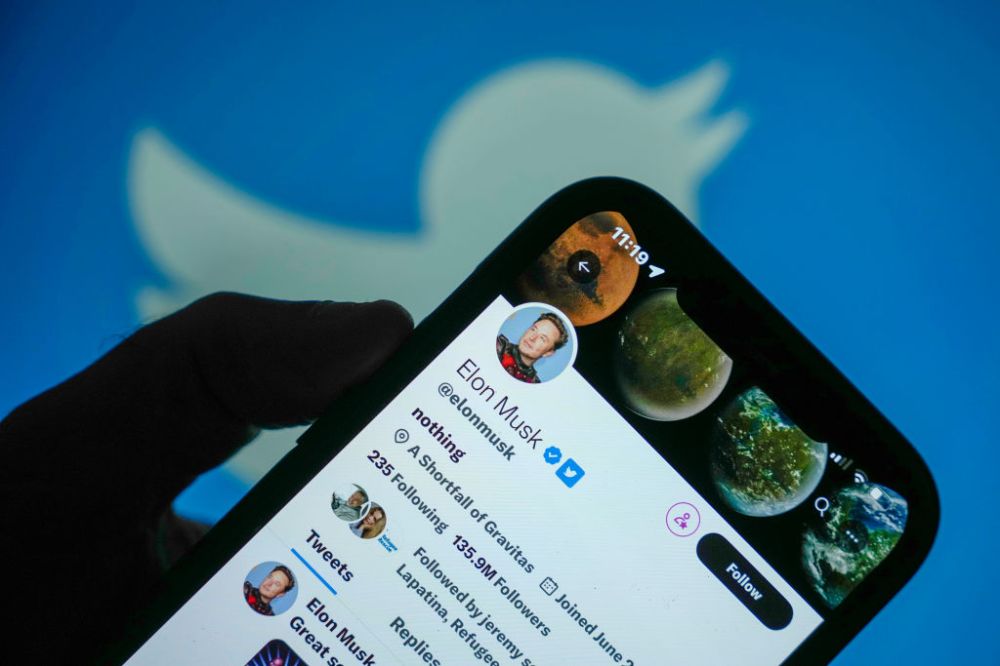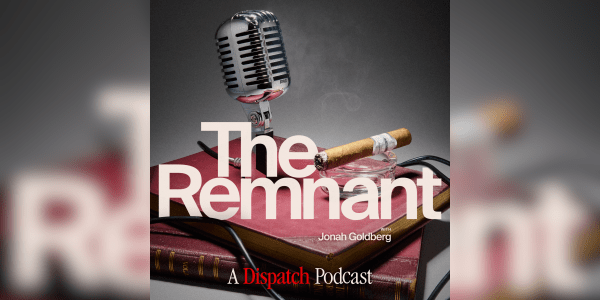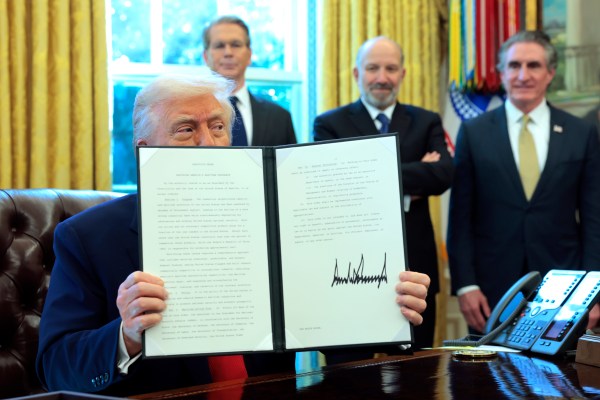Lately I’ve been watching a rich populist with a cult of personality run an organization he controls into the ground because he keeps letting spite override his professional interests.
Not the rich populist you’re thinking of. The other one.
Like the Republican Party under Donald Trump, Twitter under Elon Musk is many things but it isn’t dull. A few days ago Musk made good on a promise-turned-threat to “unverify” everyone who uses his platform apart from those who pay for the site’s subscription service, Twitter Blue.
This was a bad idea, made much worse—and more entertaining—by its execution.
Pre-Musk, verification was useful. Since 2016, many influential users—including right-wing infotainers—provided proof of identity to Twitter management and received a checkmark next to their name affirming that they are who they claim to be. If you’re a fan of Dwayne “The Rock” Johnson, for instance, and you saw a tweet from someone purporting to be him, the presence of the blue checkmark would assure you that it came from the man himself (or from his publicist, at least) rather than an imposter.
Verification was of greatest value to those like me who use the site to follow news. If an account purporting to belong to the New York Times tweeted “Breaking: Trump says he’ll nationalize Popeyes Chicken in second term,” what would tell you whether that was true or probably satire was whether the tweet bore the famous blue checkmark.
Verification benefited the reader of a verified user’s tweets more so than it did the author, in other words. There was a certain meager boastful cachet to being verified, I suppose, since it implied that your content might be influential enough for Twitter to go to the trouble of warranting that it’s truly yours. But the chief value was to the reader, who’d know at a glance whether they could trust the information in a particular tweet.
When Musk announced that, as of last Thursday, blue checkmarks would no longer indicate that a user is whom he purports to be but merely that he’s subscribed to Twitter Blue, it was tantamount to declaring that information on the platform will be less trustworthy going forward than it was before.
Which isn’t a great marketing hook for a product, I think you’ll agree.
What happened next was predictable.
Deception and confusion were baked in once Musk decided to go this route. So why would he?
One obvious answer is money. He overpaid wildly for the platform, is now highly leveraged, and needs to scrape up revenue to pay the bills wherever he can get it. Twitter Blue can help, in theory. Along with verification, those willing to pay $8 per month get not just an edit button but the privilege of posting longer content, a boost in exposure on the site, and other bells and whistles. Power users might find the service attractive. Again: in theory.
Yet, this weekend, not only had most influential users on the platform not subscribed to Twitter Blue, many were pledging publicly never to do so.
And somehow … they ended up with blue checkmarks anyway.
If you’re confused, well, so is Elon Musk.
Musk’s confusion has to do with the purpose of his acquisition. Had he treated Twitter as a business from the start, remaining in the background and focused on improving the user experience, Twitter Blue might have sold itself. Here was the great tech mogul of this time, lending his genius to another company en route to making it a smashing success. Love him or hate him, his track record at Tesla and SpaceX portended great things potentially for Twitter.
But Twitter was never a business purchase for him. It was a vanity purchase. He was and remains a hopelessly addicted user of the platform; at some point he became a convert to right-wing populism, babbling about the “woke mind virus” and criticizing Twitter’s liberal management; and so he talked himself into buying the company to impose his political vision on the service—noisily. Instead of remaining in the background, he’s become the site’s so-called “main character” almost every day.
In doing so, he’s behaved like an adolescent. He reportedly threw a tantrum and fired an engineer after his own tweets declined in engagement, then had the site’s code tweaked to amplify them. When Substack announced it was launching its own microblogging service, he throttled links to newsletters housed on its platform to punish his new rival. He suspended journalists who crossed him by covering an account that tracks his private jet, then unsuspended them based on a snap poll he conducted. He rules by momentary whim, and proudly so.
All the while, he’s interacted frequently and in a friendly manner with well-known right-wing populist bombthrowers whom liberals despise. Days after he completed his purchase of Twitter, he enraged Democrats on the platform by amplifying a conspiracy theory about Nancy Pelosi’s husband after Mr. Pelosi was attacked. He routinely tweets nonsense like this:
Users who dislike Musk and his politics would have been willing to pay for a better Twitter, I think, but they’re not going to pay for an Elon Musk vanity project run by and for red-pilled America. Musk foolishly even framed the rollout of Twitter Blue in November as a blow struck by populists against elites: “Twitter’s current lords & peasants system for who has or doesn’t have a blue checkmark is bull---t. Power to the people! Blue for $8/month.”
Only someone blind drunk on populist cant would treat verification on Twitter as a sort of caste system rather than as an efficient way to build trust in the site’s content. Either Musk really is that drunk or he deluded himself into believing that his personality cult is vastly larger than it is, such that a Jacobin appeal to “peasants” to oust their “lords” might turn his new product into a runaway moneymaker among his hordes of fans.
If so, he miscalculated. As of late March, best estimates were that just 0.2 percent of all Twitter users had subscribed to Twitter Blue and roughly half of those who did had 1,000 followers or less. Of the more than 400,000 “legacy” verified accounts (i.e., accounts verified based on proof of identity) on the platform at the time, fewer than 7,000 had signed up.
All of which created a bit of suspense last week. When those “legacy” accounts were finally unverified and stripped of their checkmarks on April 20—the date, 4/20, is in keeping with Musk’s painfully juvenile persona—how many elites would panic at having suddenly lost their cachet and immediately scramble to sign up?
Not a lot, it turned out.
Because Musk had politicized the platform so thoroughly, many celebrities and left-leaning users publicly bid their checkmarks a fond adieu or fled the site entirely. Some liberal power users, most notably the popular @dril account, launched a campaign to punish Twitter Blue subscribers by blocking them on sight, limiting their reach on the platform. "Blocking them and encouraging others to do the same on a massive scale is the complete opposite of what they want," @dril told Mashable’s Matt Binder.
A new feature that Musk had sold as a great equalizer between populists and elites had been converted for many into a mark of shame worthy of instant expulsion from a user’s feed. To be subscribed to Twitter Blue was to be presumed a pathetic Elon-worshiping attention-starved edgelord in the style of the man himself.
Which, again, isn’t a great marketing hook for a product.
If Musk had bought Twitter for business reasons, this is the point at which he would have had a rethink about his management style. But because he bought Twitter as a vanity purchase, and because he behaves on the platform like a 14-year-old, he did the most petulant thing he could think of.
He started forcing Twitter Blue subscriptions on power users. For free. Whether they wanted a subscription or not. Even after they had made clear that they didn’t want one.
LeBron James, William Shatner, Stephen King, Chrissy Teigen—these were just a few celebrities whose accounts suddenly and involuntarily bore the badge of dishonor.
Musk claimed initially that he was paying for some celebrity subscriptions out of his own pocket but as the weekend wore on it became clear that he was affixing blue checkmarks to his critics to spite them.
Even @dril ended up with a checkmark. At some point he figured out that he could make it disappear if he changed his username, so he did—whereupon someone at Twitter HQ slapped the checkmark on him again. Elon Musk’s Twitter, which had aspired to be a new public square and protector of free speech in the 21st century, was reduced on a Saturday afternoon to playing whack-a-mole by verifying one of its most well-known users against his will purely to antagonize him.
Which, incidentally, might be a violation of federal law.
“The cruelest own Elon Musk can think of is ‘you are associated with me and my product,’” said one user watching all of it unfold. “You can tell Twitter Blue is a good product because the only two ways to get it is to pay for it or make the owner of Twitter so mad he buys it for you to punish you,” quipped another. Musk had stumbled into a gross media spectacle advertising the fact that his new service was so toxic and/or worthless to influential people that they felt obliged to disclaim it even when he gave it to them for free.
Meanwhile, drunk on populist propaganda themselves, his red-pilled apologists strained to make sense of people’s reluctance to fork over eight measly dollars.
It wasn’t elite contempt for the hoi polloi that led Musk’s critics to shed their checkmarks en masse and it certainly wasn’t stinginess about paying. One user told the truth succinctly: “What Elon doesn't understand about his ‘$8/month for herpes’ offer is that nobody's hung up on the cost, the big issue is the herpes.” Having remade his new platform into a safe space for unseemly populist trolls various and sundry, Musk discovered that no one outside his own fan base wanted to formally affiliate with it. Least of all by paying one of the richest people in world history a monthly fee for the privilege.
At last check, some newly verified Elon fanboys had been reduced to heckling Muppets and guilt-tripping the, uh, Auschwitz Memorial Museum for “virtue signaling” over its refusal to purchase Twitter Blue. Anything to ease the pain of realizing that their hero was gifting subscriptions to “lords” while they, the “peasants,” still had to cough up $8 a month.
In the end, Musk opted to restore the blue checkmark to all accounts with more than 1 million followers. (Including those created by notable figures long since dead.) It’s unclear if those users are now enrolled in Twitter Blue, with access to its features, or if the checkmark has been decoupled from the subscription service in their case. If the latter, it’s unclear what purpose the mark now serves since it no longer acts as proof of verification.
Presumably Musk did it because he’s desperate to salvage a bit of cachet by association for his paid subscribers. If everyone enrolled in Twitter Blue is an alt-right crypto bro, then no normie will consider joining. But if Twitter Blue is 99.9 percent alt-right crypto bros and LeBron James, that might be a different ball game. The optimal peasants-to-lords ratio isn’t 100-0, it turns out.
I suspect it’s too late to remove the taint, though. Tom Nichols delivered an apt eulogy for the checkmark: “So, to recap, Musk got rid of blue checks to eliminate elitism and arbitrariness, and to generate income for Twitter Blue. He then … arbitrarily handed out checks to 1M-follower-elites, made the check toxic, and has no hope of generating income from it.”
That’s about the size of it. So what are we left with from this moronic episode?
One lesson, often relearned, is that populists are insecure. Musk fans could have greeted the great Twitter Blue boycott by “lords” with a shrug, indifferent to who did and didn’t subscribe once the dust had settled. So long as the checkmark was equally available for purchase to all, “peasants” included, the playing field had been leveled.
But many didn’t react that way. Some, like Yarom Hazony above, inflated the significance of the new policy absurdly, perhaps overcompensating for the right’s dearth of more meaningful populist victories. Others resented that their new mark of distinction was scorned by actual elites and disliked being reminded that an outfit run by one of their heroes is regarded by many as toxic, juvenile, and incompetent. That’s a hard pill to swallow when you claim to represent a “silent majority.”
And if you’re seeing parallels to Donald Trump’s Republican Party in all that, right down to trying to brute-force one’s preferences on the actual majority after failing to persuade them to adopt those preferences voluntarily, it’s not a coincidence.
A second lesson is that executives surrounded by a cult of personality tend not to govern well. Musk is a far less sinister clown than Trump is, the sort prone to responding to the press with poop emojis rather than declaring them to be enemies of the people. (Although it ain’t Trump who’s operating a business in the heart of the Uyghur genocide.) I respect his business acumen enough to believe that he’d recognize how badly handled the Twitter Blue episode was if he were a third party observing from afar. But he’s not just a businessman running a company, he’s a messianic figure with millions of admirers. And he relishes it. Which is a problem.
Like Trump, he can’t serve two masters. When the needs of the icon to punish his enemies conflict with the needs of the businessman to broaden his firm’s appeal and turn a profit, the icon prevails. That’s how we ended up with Trump endorsing a raft of unelectable losers in Republican primaries last year, and it’s how we ended up with Elon inadvertently advertising the undesirability of Twitter Blue by forcing it on recalcitrant celebrities last weekend. There’s a reason cults end up corrupt and chaotically managed: Narcissism spoils the judgment of every cult leader.
And by doing so, it leaves them exposed in an intimate way. “The blue-check issue has turned into an oddly big, useful moment that has stripped Musk naked,” author Mark Harris wrote this weekend. “Everything—the neediness, the bad judgment, the doubling-down, the hunger to be at the center of the action, the trolling, the laugh-chasing, the ache for validation—is on display.” He could also have been describing you-know-who.
The last lesson is that spite is a particularly ruinous trait for an organizational leader to have. Republican voters are learning that in a vivid way, as everyone but everyone assumes Trump will endeavor to spoil the nominee’s chances in next year’s general election if he isn’t the nominee himself. When his efforts to cling to power in 2020 failed, he blamed Republicans for not defending him ardently enough and threatened to form his own party. Upon being told at the time by the head of the RNC that doing so would doom the GOP’s chances in future elections, he allegedly replied, “Exactly. You lose forever without me. I don't care." Trump’s spite could destroy the Republican Party.
Watching the second-richest man in the world become consumed by winning a battle of wits with a pseudonymous troll like @dril, at the expense of making a laughingstock of his new subscription service no less, strongly suggests that Elon Musk also has a problem with spite. It’s probably been building for a while: His management of Twitter thus far has ranged from inept to embarrassing, spoiling his reputation as a tech visionary with a Midas touch. And his detractors, especially on the left, have reveled in every mistake. What was supposed to be a vanity project has become a sustained exercise in humiliation.
Last weekend he finally lashed out—but as a child would, spitefully doing the opposite of what his antagonists wanted to try to annoy them. They ridiculed his plan for paid checkmarks and even organized a boycott of those who partook of it. All he could think to do to hit back was … force them to have checkmarks too. For free. Spite rarely looks more mindless.
I’m sure it felt good in the moment but it’s not a hallmark of an executive who’s thinking clearly, and it’s never a sign of a healthy, well-led institutional culture. Good luck to all of Twitter’s remaining investors.






Please note that we at The Dispatch hold ourselves, our work, and our commenters to a higher standard than other places on the internet. We welcome comments that foster genuine debate or discussion—including comments critical of us or our work—but responses that include ad hominem attacks on fellow Dispatch members or are intended to stoke fear and anger may be moderated.
With your membership, you only have the ability to comment on The Morning Dispatch articles. Consider upgrading to join the conversation everywhere.